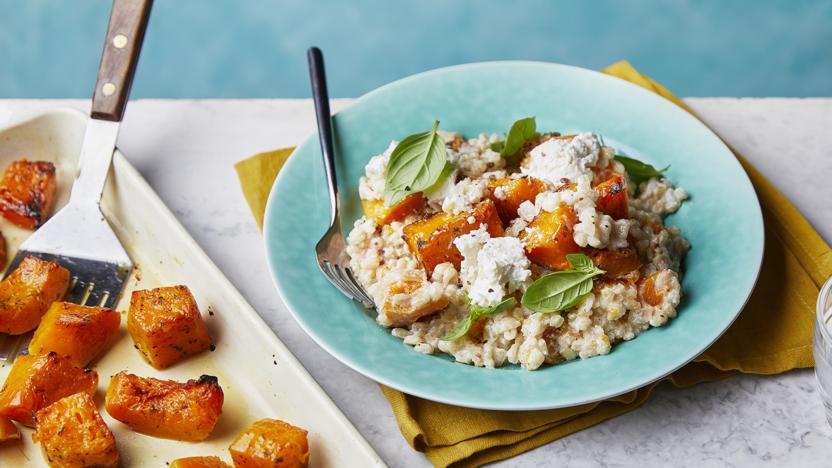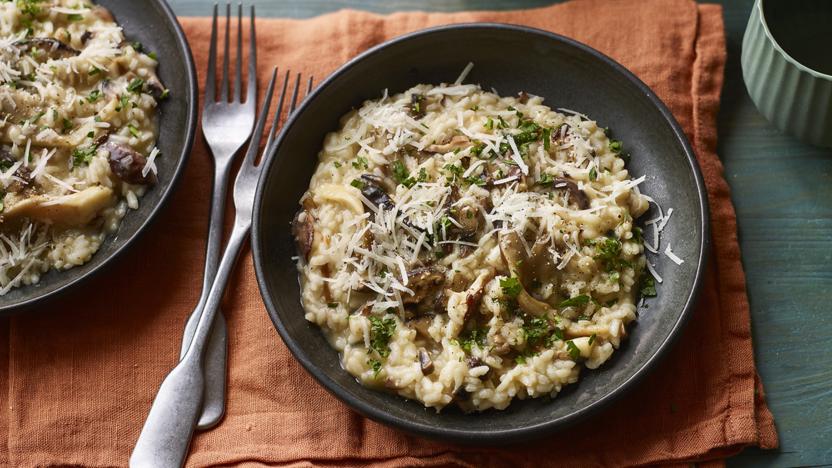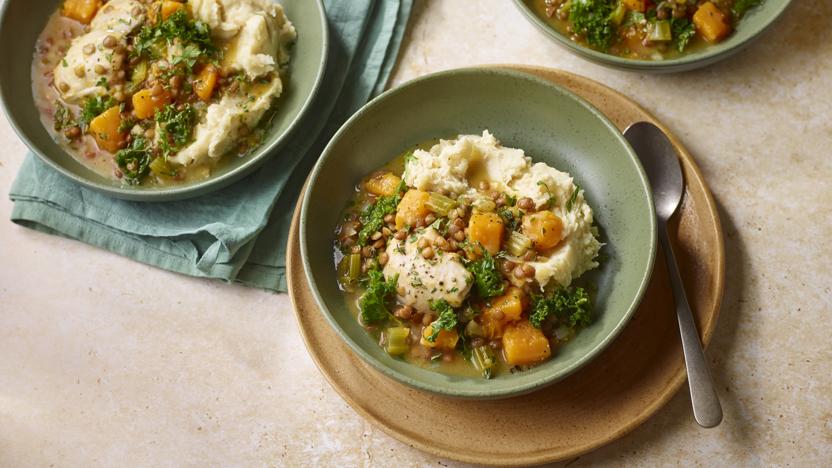Pearl barley risotto with butternut squash, basil and ricotta

Pearl barley is cheap, filling and really good for you – and in this risotto-style dish it also tastes fabulous. Once cooked it reheats better than rice, making it perfect for batch cooking.
This recipe is part of a budget student meal plan for one. It is designed to be made in conjunction with a low-cost store-cupboard .
Each serving provides 350 kcal, 8.6g protein, 42.6g carbohydrate (of which 20.8g sugars), 14.2g fat (of which 6g saturates), 8.8g fibre and 1.32g salt.

Ingredients
- 1 whole butternut squash (around 1kg/2lb 4oz), scrubbed
- 1 tbsp olive oil
- 1 tsp dried mixed herbs
- 20²µ/¾´Ç³ú butter
- 1 onion, finely chopped
- 1 vegetable stock cube
- 250g/9oz pearl barley (or pouches of cooked grains – see recipe tips for notes), rinsed and drained
- few basil leaves, plus extra to serve
- 70²µ/2½´Ç³ú ricotta, plus 30g/1oz to serve
- salt and freshly ground black pepper
Method
Preheat the oven to 220C/200C Fan/Gas 7 and line a large baking tray (or use two to avoid overcrowding) with baking paper.
There is no need to peel the butternut squash unless you really dislike the peel (it's entirely edible, but can be a little tough). Stand the squash upright and use a large knife to cut straight down the middle. Using a spoon scoop out and discard the seeds.
Cut the two halves into thick chunks, approximately 3cm/1¼in thick slices. Place on the baking tray, drizzle with 2 teaspoons olive oil, sprinkle over the mixed herbs, season well with salt and pepper and roast for about 30 minutes, or until a knife inserts easily and the squash is starting to char on the edges.
Divide the roast squash into three portions (see Recipe Tip 3). Use one portion now and divide the rest between two containers and store in the fridge to use later. If desired, you can remove the skin from portion you are using now (it comes away easily once cooked). Roughly chop the squash.
Heat the butter and the remaining teaspoon olive oil in a large saucepan over a medium heat and add the onion. Stir, then cover and cook for about 5 minutes, stirring regularly, until soft and translucent.
Place the vegetable stock cube in a separate saucepan of boiling water, bring to a simmer and keep over a low heat.
Add the pearl barley and basil to the onion mixture and stir well. Turn the heat up to medium–high, add a splash of stock and leave to bubble for a minute or so, stirring continuously until the liquid has evaporated.
Reduce the heat to medium, add the vegetable stock to the pearl barley mixture one ladleful at a time, stirring continuously. Only add the next ladleful once the previous one has been completely absorbed. Repeat this process until the pearl barley is tender, but retains some bite. This should take about 20 minutes. Add the roast squash and ricotta and stir well. Season with salt and pepper to taste.
This recipe makes three portions – eat one portion now, divide the remaining portions into two sealed containers and chill in the fridge. Serve this portion of risotto garnished with basil leaves and the remaining 30g/1oz ricotta dotted over the top.
Recipe Tips
Tip 1: This recipe makes three portions. Eat one portion tonight, divide the remaining portions into two sealed containers and chill in the fridge.
Tip 2: If you’re following the budget student meal plan for one, tomorrow’s lunch is Pearl barley risotto leftovers. Place one of the risotto portions from the fridge (see above) in a small saucepan, add a splash of water and mix well to break up. Place over a medium heat and cook until piping hot throughout. You can also reheat in a microwave. Season with salt and pepper to taste and serve with 50g/1¾oz ricotta, some fresh basil leaves and a little finely chopped red chilli, if preferred, but this is optional.
Tip 3: In this recipe, you roast the whole butternut squash, but you will only use a third of it here. Divide the remaining two-thirds into two batches in separate sealed containers and store in the fridge (one batch will be used for a warm salad and the final batch divided between a pasta dish and served with leftovers as a lunch).
Tip 4: If you prefer, you can use 2 pouches of cooked grains instead of pearl barley (such as wholegrain rice, mixed wholegrain, wild & red rice or Spanish-style grains). This is more expensive but easier – especially if you are cooking the recipe outside of the meal plan.


